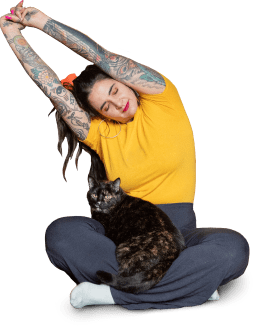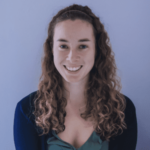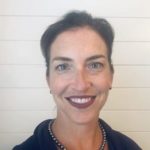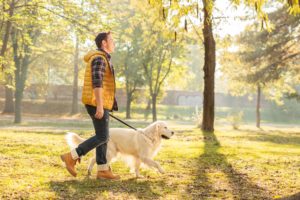Treatment for Non-24-Hour Sleep Wake Disorder
Treatment for non-24-hour sleep-wake disorder (N24SWD) aims to establish a 24-hour sleep-wake cycle, or “entrain (synchronize) the circadian rhythm.” This process commonly involves using melatonin, bright light therapy, or other methods that are known to influence the circadian rhythm.
Non-24-Hour Sleep-Wake Disorder Treatment Options
Multiple N24SWD treatment options exist. Your doctor may prescribe one or more of the following therapies based on specific factors of your situation, such as the length of your circadian rhythm and whether you are blind or sighted.
Melatonin
The 2015 American Academy of Sleep Medicine (AASM) guidelines recommend using melatonin or melatonin receptor agonists for treatment of N24SWD in blind patients, with the exception of elderly patients with dementia . Melatonin is also commonly included in the treatment plan for sighted individuals with N24SWD.
The hormone melatonin prepares the body for sleep and plays a key role in regulating the sleep-wake cycle. Taking supplemental melatonin at strategic times aims to facilitate sleep onset, but provokes lasting changes to the circadian rhythm. Timing is very important, as mistimed treatment may worsen symptoms .
Melatonin treatment should begin when the sleep-wake cycle has shifted close to the desired schedule. It may take more than a month to see results, and patients may need a few adjustments to their prescription before they find a successful formula. A low dose of melatonin is often enough to shift the circadian rhythm to the desired schedule, especially for people who metabolize melatonin more slowly .
Sighted individuals and patients with a schedule longer than 25 hours may find that treatment with melatonin can reduce delays to the circadian rhythm, but not completely resolve them.
Side effects of melatonin are relatively mild, though for some patients they are sufficiently bothersome to stop treatment. Potential melatonin side effects include:
- Headaches
- Daytime sleepiness
- High or low blood pressure
- Stomach problems
- Depressive symptoms
- Decreased tolerance to glucose
- Alopecia areata
Melatonin is considered a dietary supplement, not a drug. As a result, it is not regulated by the Food and Drug Administration (FDA). Melatonin is affordable and widely available over-the-counter, but it is not subject to strict controls and may therefore vary in purity and dosage.
Melatonin Receptor Agonists
Melatonin receptor agonists mimic the effects of melatonin by binding to the same nerve sites. The FDA has currently approved one melatonin receptor agonist, tasimelteon , for treatment of N24SWD.
Early research suggests that a daily dose of tasimelteon can improve nighttime insomnia, reduce daytime sleepiness , and entrain the circadian rhythm on a level comparable to melatonin supplements. As with melatonin supplements, tasimelteon may take a few months to exert its effects, and the circadian rhythm may relapse when patients stop taking tasimelteon.
As an FDA-approved prescription drug, tasimelteon is easier to control in terms of dosage and purity than melatonin. However, tasimelteon is prohibitively expensive and can be difficult to obtain. For these reasons, doctors may try melatonin first and then proceed to tasimelteon if melatonin is unsuccessful.
Side effects of tasimelteon are generally mild and may include:
- Headaches
- Elevated liver enzymes
- Vivid dreams or nightmares
- Urinary tract infections
- Upper respiratory tract infections
Limited research has also been done on ramelteon, another melatonin receptor agonist, suggesting that ongoing doses of ramelteon in combination with sleep hygiene may promote long-term regulation of the circadian rhythm.
Light Therapy
Exposure to bright light in the morning appears to be an effective way of retraining the circadian rhythm for sighted individuals, as well as blind individuals with functioning light pathways.
Light therapy is traditionally undertaken by sitting in front of a light box for up to an hour in the morning. This cumbersome setup causes problems for those who lack motivation, time, or the necessary space and materials. New studies are examining the possibility of performing light therapy using a wearable device. Experts also recommend trying to get natural sunlight in the morning.
For the rare patients who have a circadian rhythm that is shorter than 24 hours, or those who tend to wake up and go to sleep earlier than they’d like, melatonin may be taken in the morning and bright light therapy at night.
Other Substances
Attempts to cure non-24-hour sleep-wake disorder with sleep medication are largely unsuccessful, particularly if medication is the only form of treatment used. Most sleeping pills act by directly inducing sleepiness, but they don’t exert a significant effect on the circadian rhythm .
A handful of small studies suggest that adding extra medications such as orexin receptor agonists to a standard treatment course may provide the extra push necessary to retrain the circadian rhythm for people with stubborn N24SWD or comorbid disorders.
Vitamin B12 supplements, caffeine , and alcohol do not clearly exert a consistent or meaningful effect on the circadian rhythm.
Lifestyle Changes
Prescribed sleep-wake timing , strategic avoidance of light in the evening, or timed physical activity may influence the circadian rhythm, but these methods lack scientific evidence in people with N24SWD.
Co-existing disorders such as anxiety and depression should also be treated, especially if they interfere with the patient’s ability to follow the N24SWD treatment course. Mental conditions and sleep problems often have a bidirectional influence on one another, meaning that anxiety and depression may abate once proper sleep is restored.
Patients with the freedom to follow a flexible schedule may be content to follow their natural circadian rhythm around the clock. However, work schedules and social obligations make this virtually impossible for most people.
Sleep Hygiene
Adhering to sleep hygiene rules, including limiting naps, avoiding screen time before bed, and getting regular exercise, can help you get the most out of your N24SWD treatment plan. You may also be encouraged to adapt your meals, exercise, light exposure, bedtimes, socializing, and other activities to your desired schedule in order to strengthen circadian cues and avoid triggering a relapse of non-24-hour rhythms.

Treatment Considerations for Blind vs. Sighted Patients With N24SWD
Doctors lack treatment guidelines for sighted patients with N24SWD because most N24SWD therapies have been studied in the blind or in healthy adults, with researchers extrapolating results to sighted individuals with N24SWD .
The mechanisms underlying N24SWD are not fully understood, especially for sighted people. There may be several causes, including a lack of circadian cues, a problem with the pathway that processes these cues, a problem with melatonin release, or a slower circadian rhythm that simply takes longer to complete one cycle .
Different causes of N24SWD may be the reason certain therapies work for some people, but not in others. The most obvious example of this is light therapy, which is an integral part of sighted non-24-hour treatment but which has little to no effect in totally blind people who have lost the capacity to process light.
Treating N24SWD requires a thorough examination of potential underlying causes, and it’s not unusual for a doctor to try several different treatment methods before successfully entraining the 24-hour rhythm. For the best results, physicians should maintain ongoing communication with patients and adapt the treatment schedule as necessary.
What Is the Outlook for People With Non-24-Hour Sleep-Wake Disorder?
With consistent adherence to their treatment plan, many people with non-24-hour sleep-wake disorder can maintain a regular sleep-wake schedule and enjoy improvements in daytime fatigue and nighttime insomnia. Most treated individuals elect to keep a relatively late bedtime.
Unfortunately, non-24-hour sleep-wake disorder medication and light box therapy require adherence to a rigid schedule that is often incompatible with social schedules, so many people stop using them over the long term. This is unfortunate, because ongoing treatment is necessary to maintain a steady circadian rhythm.
Some individuals with N24SWD still experience tiredness, difficulty concentrating, or fragmented sleep even after adopting a regular sleep-wake schedule. A continuation of symptoms may indicate that other bodily processes, such as appetite or body temperature, are not well synchronized to the sleep-wake cycle. It’s always a good idea to share these concerns with your doctor and work together to adapt your treatment plan.

Still have questions? Ask our community!
Join our Sleep Care Community — a trusted hub of sleep health professionals, product specialists, and people just like you. Whether you need expert sleep advice for your insomnia or you’re searching for the perfect mattress, we’ve got you covered. Get personalized guidance from the experts who know sleep best.
References
18 Sources
-
Auger, R. R., Burgess, H. J., Emens, J. S., Deriy, L. V., Thomas, S. M., & Sharkey, K. M. (2015). Clinical Practice Guideline for the Treatment of Intrinsic Circadian Rhythm Sleep-Wake Disorders: Advanced Sleep-Wake Phase Disorder (ASWPD), Delayed Sleep-Wake Phase Disorder (DSWPD), Non-24-Hour Sleep-Wake Rhythm Disorder (N24SWD), and Irregular Sleep-Wake Rhythm Disorder (ISWRD). An Update for 2015: An American Academy of Sleep Medicine Clinical Practice Guideline. Journal of clinical sleep medicine : JCSM : official publication of the American Academy of Sleep Medicine, 11(10), 1199–1236.
https://pubmed.ncbi.nlm.nih.gov/26414986/ -
Burgess, H. J., & Emens, J. S. (2016). Circadian-based therapies for circadian rhythm sleep-wake disorders. Current Sleep Medicine Reports, 2(3), 158–165.
https://pubmed.ncbi.nlm.nih.gov/27990327/ -
Keijzer, H., Smits, M. G., Duffy, J. F., & Curfs, L. M. (2014). Why the dim light melatonin onset (DLMO) should be measured before treatment of patients with circadian rhythm sleep disorders. Sleep Medicine Reviews, 18(4), 333–339.
https://pubmed.ncbi.nlm.nih.gov/24388969/ -
Braam, W., van Geijlswijk, I., Keijzer, H., Smits, M. G., Didden, R., & Curfs, L. M. (2010). Loss of response to melatonin treatment is associated with slow melatonin metabolism. Journal of Intellectual Disability Research, 54(6), 547–555.
https://pubmed.ncbi.nlm.nih.gov/20576063/ -
Sack, R. L., Brandes, R. W., Kendall, A. R., & Lewy, A. J. (2000). Entrainment of free-running circadian rhythms by melatonin in blind people. The New England Journal of Medicine, 343(15), 1070–1077.
https://pubmed.ncbi.nlm.nih.gov/11027741/ -
Lockley, S. W., Dressman, M. A., Licamele, L., Xiao, C., Fisher, D. M., Flynn-Evans, E. E., Hull, J. T., Torres, R., Lavedan, C., & Polymeropoulos, M. H. (2015). Tasimelteon for non-24-hour sleep-wake disorder in totally blind people (SET and RESET): Two multicentre, randomised, double-masked, placebo-controlled phase 3 trials. Lancet , 386(10005), 1754–1764.
https://pubmed.ncbi.nlm.nih.gov/26466871/ -
Neubauer D. N. (2015). Tasimelteon for the treatment of non-24-hour sleep-wake disorder. Drugs of Today, 51(1), 29–35.
https://pubmed.ncbi.nlm.nih.gov/25685859/ -
Emens, J. S., & Eastman, C. I. (2017). Diagnosis and treatment of non-24-h sleep-wake disorder in the blind. Drugs, 77(6), 637–650.
https://pubmed.ncbi.nlm.nih.gov/28229310/ -
Johnsa, J. D., & Neville, M. W. (2014). Tasimelteon: A melatonin receptor agonist for non-24-hour sleep-wake disorder. The Annals of Pharmacotherapy, 48(12), 1636–1641.
https://pubmed.ncbi.nlm.nih.gov/25204464/ -
Watanabe, A., Hirose, M., Arakawa, C., Iwata, N., & Kitajima, T. (2018). A case of non-24-hour sleep-wake rhythm disorder treated with a low dose of ramelteon and behavioral education. Journal of Clinical Sleep Medicine, 14(7), 1265–1267.
https://pubmed.ncbi.nlm.nih.gov/29991416/ -
Iwata, M., & Kaneko, K. (2020). Non-24-hour sleep-wake disorder successfully treated with the combination of ramelteon and suvorexant in a case of autism spectrum disorder. Neuropsychopharmacology Reports, 40(4), 383–387.
https://pubmed.ncbi.nlm.nih.gov/32990413/ -
St. Hilaire, M. A., & Lockley, S. W. (2015). Caffeine does not entrain the circadian clock but improves daytime alertness in blind patients with non-24-hour rhythms. Sleep Mmedicine, 16(6), 800–804.
https://pubmed.ncbi.nlm.nih.gov/25891543/ -
Burgess, H. J., Rizvydeen, M., Fogg, L. F., & Keshavarzian, A. (2016). A single dose of alcohol does not meaningfully alter circadian phase advances and phase delays to light in humans. American Journal of Physiology. Regulatory, Integrative and Comparative Physiology, 310(8), R759–R765
https://pubmed.ncbi.nlm.nih.gov/26936778/ -
Sletten, T.L., Magee, M., Murray, J.M., Gordon, C.J., Lovato, N., Kennaway, D.J., Gwinie, S.M., Bartlett, D.J., Lockley, S.W., Lack. L.C., Grunstein, R.R., Rajaratnam, S.M.W., & Delayed Sleep on Melatonin (DelSoM) Study Group. (2018). Efficacy of melatonin with behavioural sleep-wake scheduling for delayed sleep-wake phase disorder: A double-blind, randomised clinical trial. PLoS Medicine, 15(6), e1002587.
https://pubmed.ncbi.nlm.nih.gov/29912983/ -
Abbott S. M. (2019). Non-24-hour sleep-wake rhythm disorder. Neurologic Clinics, 37(3), 545–552.
https://pubmed.ncbi.nlm.nih.gov/31256788/ -
Malkani, R. G., Abbott, S. M., Reid, K. J., & Zee, P. C. (2018). Diagnostic and treatment challenges of sighted non-24-hour sleep-wake disorder. Journal of Clinical Sleep Medicine, 14(4), 603–613.
https://pubmed.ncbi.nlm.nih.gov/29609703/ -
Micic, G., Lovato, N., Gradisar, M., Burgess, H. J., Ferguson, S. A., & Lack, L. (2016). Circadian melatonin and temperature taus in delayed sleep-wake phase disorder and non-24-hour sleep-wake rhythm disorder patients: An ultradian constant routine study. Journal of Biological Rhythms, 31(4), 387–405.
https://pubmed.ncbi.nlm.nih.gov/27312974/ -
Micic, G., Lovato, N., Ferguson, S. A., Burgess, H. J., & Lack, L. (2021). Circadian tau differences and rhythm associations in delayed sleep-wake phase disorder and sighted non-24-hour sleep-wake rhythm disorder. Sleep, 44(1), zsaa132.
https://pubmed.ncbi.nlm.nih.gov/32619243/




